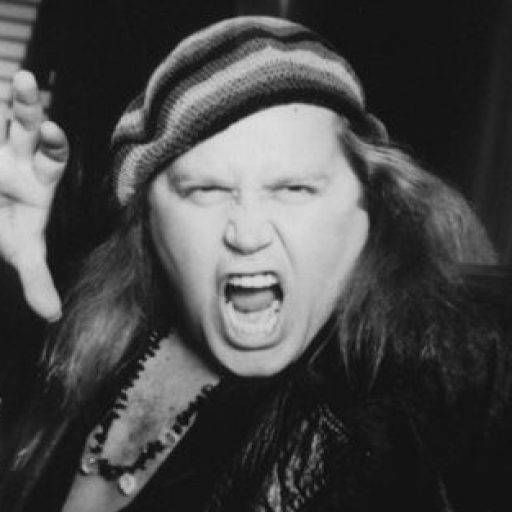By Randy Lewis
Originally printed in The Los Angeles Times
Sunday, April 22, 1990
The most important comedians have always been those who helped knock down the social, racial, economic and/or cultural barriers that keep people apart.
In the ’30s, Charlie Chaplin and the Marx Brothers made sure that society’s little tramps didn’t get steamrolled in America’s desperate quest for the better life. Though they worked from greatly different vantage points, Lenny Bruce and Bill Cosby contributed during the 1960s to the condemnation of culturally ingrained racism. And Woody Allen has built a career on giving hope to nerds throughout the world.
Along the way, comedians often have assumed the role that the sage assigned to journalists–“to comfort the afflicted and to afflict the comfortable.”
Unfortunately, some new-generation descendants of the greats have begun to worship the tools some of their forefathers used–stinging insults, graphic language, sexually explicit situations–without understanding the job for which those tools were employed. I refer to two of the today’s hottest stand-up comics, performers who have reached rock ‘n’ roll-star status capable of filling huge concert halls and arenas: Sam Kinison and Andrew (Dice) Clay.
Each is scheduled to play Orange County this week: Kinison in a club date at the Laff Stop in Newport Beach and Clay at the 18,765-capacity Pacific Amphitheatre in Costa Mesa. (Sam usually does larger facilities, but he booked this one himself, reportedly to help pay his considerable alimony bills.)
Both have captured the attention (I would have said “imagination,” but that’s far too complimentary) of the MTV-generation audience. Both appeal primarily to teen-aged males–no surprise, considering the heavily misogynist content of both their acts. If I were a woman and a date took me to see either of these wild boors, I’d ask for his money back–then hail a cab.
Though I’m at a loss to explain the popularity of either, Clay is the bigger mystery. (By the way, if you’re looking for lots of examples of their “jokes” here, forget it. The amount of each man’s material that can be quoted in a family newspaper probably weighs less than a stegosaurus’s brain.)
With Kinison, it’s easier to identify (if not identify with) the primal catharsis in some of his routines. On his first album, there was an underlying sense of true frustration at the hypocrisy he experienced in the life he led as a preacher before turning his back on the church and becoming the antichrist of stand-up.
Also, Kinison, unlike Clay, knows how to structure a joke that is created out of a unique (albeit generally base) perspective. And Kinison knows how to deliver a punch line.
One old routine about how difficult Jesus might have found it to explain his Crucifixion and Resurrection to a wife displayed originality, intellect and absurd juxtaposition of the real and the far-fetched. Sound comic principals, all.
But since then, Kinison has been caught up in his own fame: He spends nearly as much time on his latest album responding to Rolling Stone comments about his reputed wild lifestyle as he does creating “new” material. And that consists of inflaming racist attitudes toward Iranians, gays, women, the physically disabled and just about anyone in the world who’s not Sam Kinison.
Dice Clay, however, doesn’t even have that much going for him. How he has so quickly become a national phenomenon is a mystery that ranks up there with how TV execs ever thought Pat Sajak would one day unseat Johnny Carson.
If there’s more than meets the eye to Clay’s act–a leather-jacketed New Yawk street thug who brags about every bizarre twist on intercourse he knows–I can’t find it. Clay substitutes unbridled repugnance for viewpoint, odious epithets for insight. He’s as funny as a gang rape, as clever as a midnight mugging.
Lenny Bruce showed that comedy can be tough, brutal and sometimes even ugly in skewering the objects of his scorn. But those targets were small-mindedness, bigotry and hate–traits that Clay and Kinison would rather lionize. Their loathsome attacks on women, homosexuals, ethnic minorities and others aren’t pointed or thought-provoking. They are simply imbecilic. Perhaps Clay doesn’t make jokes about the chronically stupid because they would hit too close to home.
If there’s any rationalization for Clay’s moronic-punk persona, it could only be that he really is a brilliant performance artist whose very presence exposes how easily America can fall in line behind a crude, unthinking, spectacularly unfunny delinquent.
Could it be that both are so hugely popular for the simple reason that they accurately reflect, and give voice to, the values of their audience? That a young generation bred on the senseless brutality of slasher movies like “Friday the 13th” and “Nightmare on Elm Street” have become (to borrow Hunter S. Thompson’s pet phrase) a nation of swine?
Is it possible that, because celebrity worship has been elevated to the rank of religious experience, we have surrendered the ability to think critically when in the presence of a “star”? Otherwise, why would audiences grant not just their approval but their delight at attitudes and behavior that, if expressed by a child or a stranger at the supermarket, they would greet with the back of a hand?
More disturbing yet is the realization is that Kinison and Clay, because they are at the top of the stand-up comedy heap right now if only in terms of their ticket-selling potential, undoubtedly are spawning dozens, maybe hundreds of imitators who are dying to step into their dung-encrusted jackboots.
Remember the scene in Woody Allen’s “Manhattan,” when a question–how does one respond to neo-Nazis–pops up at a posh party of left-wing intellectuals? “We should go down there,” Woody suggests, “get some bricks and some baseball bats and really explain things to them.” When one haughty woman opines: “Really biting satire is always better than physical force,” Woody retorts: “No, physical force is always better with Nazis.”
But the best course of action simply may be the one you’d take with bratty children who misbehave just for the attention they can draw: ignore them and hope–no, pray–they’ll go away.

